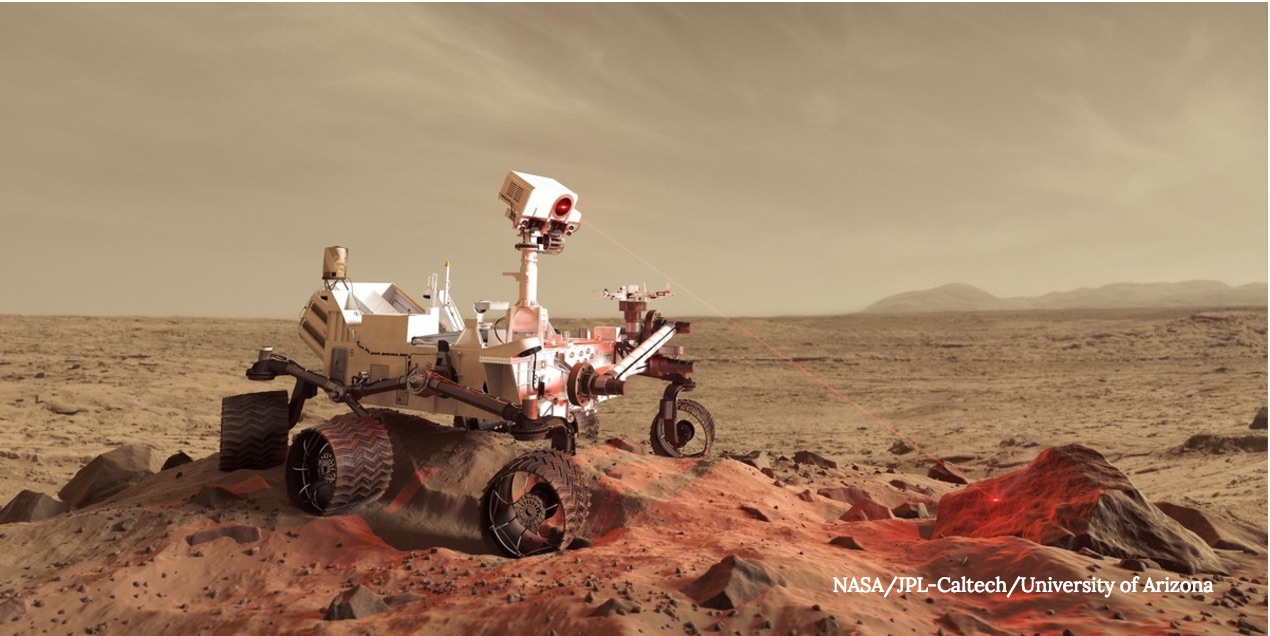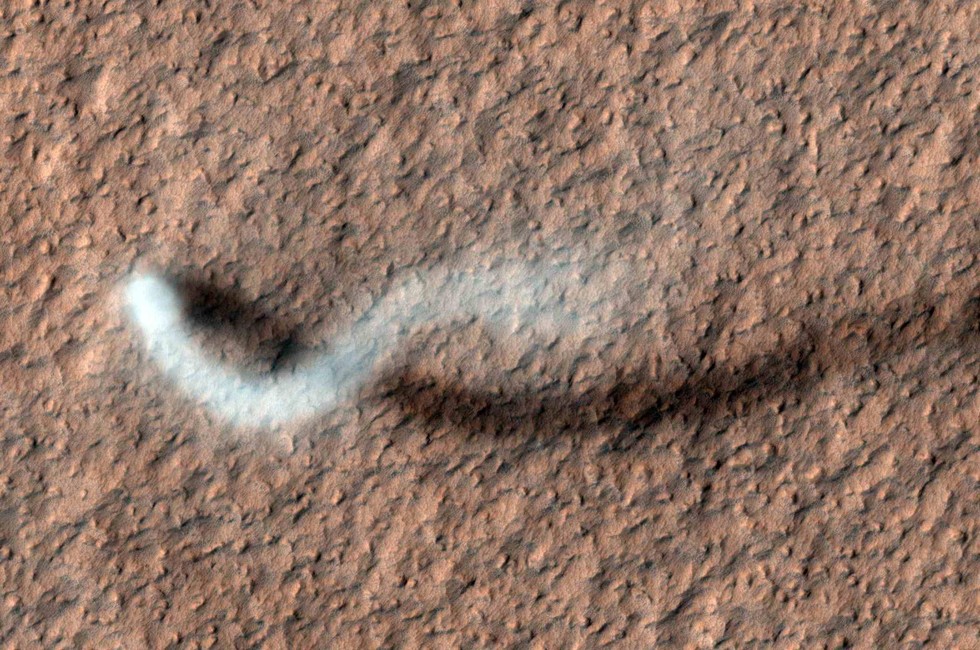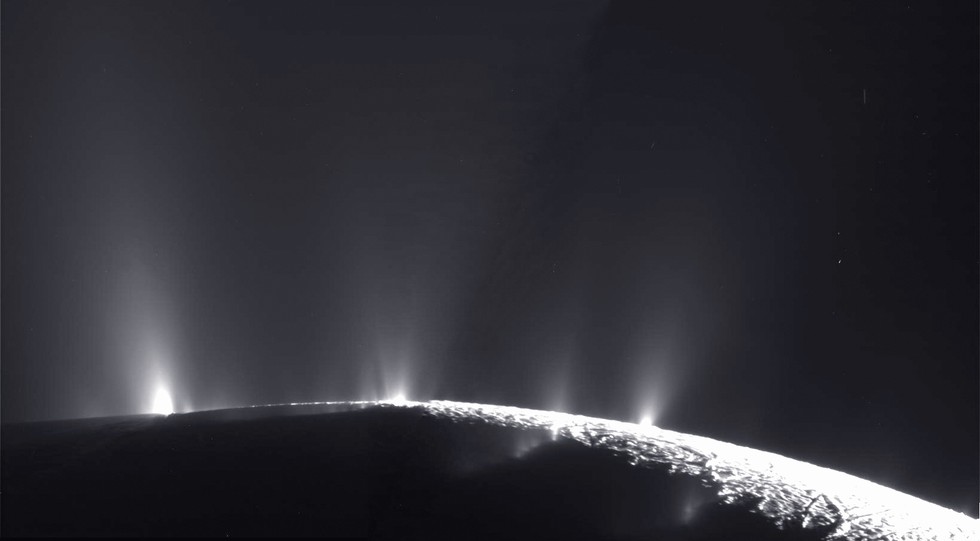Space Laser to Help Robots 'Sniff Out' Alien Life

Back in the 2000s, when Branimir Blagojevic was developing a sensor for the military to detect airborne bio-hazards, he had no idea the technology could later be used in the search for extraterrestrial life.
His original work focused on the novel use of lidar — which stands for Light Detection and Ranging — and is based on similar principles as radar. Instead of using radio waves like radar, lidar uses laser light to detect objects and measure the distance to a target. This why lidar is often referred to as "light radar."
Blagojevic, now a NASA technologist at the Goddard Space Flight Center in Maryland, realized that the technology behind seeking out toxins and pathogens in the air might have an application beyond Earth and may even contribute to NASA's mission to work out whether Mars has (or had) life.
"If past life existed on Mars, it could be possible to detect with this kind of instrument," Blagojevic told Seeker.
RELATED: Mars Rover Curiosity Can Now Fire Laser
Currently, any mission sent to Mars is pretty limited in how it searches for evidence of biology, past or present. The Mars Science Laboratory rover Curiosity, for example, can scoop a sample of regolith (the dusty powdery "soil" that covers the Red Planet) in the hope that the tiny amount of pulverized rock contains biological chemistry. Making physical contact with any material intended for analysis is a concern; though any robot sent to Mars is sanitized, there's a risk of contaminating the "pristine" sample with contaminants from Earth, potentially skewing test results.
Also, the slow and laborious process a robot must go through to collect and analyze samples means very few samples can be taken from any given location. It could be that the sample analyzed by the Mars rover scoops a completely sterile sample, but unbeknownst to the robot or its controllers back on Earth, there could be Mars dirt crawling with organic chemistry only a couple of meters to the left. They would never know.
Get the Space.com Newsletter
Breaking space news, the latest updates on rocket launches, skywatching events and more!
Blagojevic likens this maddening search as trying to find the proverbial "needle in a haystack." But it's worse than that — we don't yet know where the haystack is.
So how do you narrow the odds of finding biological material on Mars? One method could be to use Blagojevic's Bio-Indicator Lidar Instrument, or, simply "BILI."

Mars is no stranger to lasers. Currently, Curiosity uses its ChemCam to laser-blast rocks so its sensors can study the vapor produced to decipher what chemicals it contains. Mars rocks will be safe from BILI, however.
Blagojevic, working with NASA planetary scientists Melissa Trainer, Alexander Pavlov and Melissa Floyd, hopes to mount this lidar system on a future Mars rover much in the same way ChemCam is used by Curiosity, but rather than aiming it at interesting geological features, this future rover would shoot its laser at particles in the Martian atmosphere. During its mission, the rover would scan its environment for dust plumes. Once it finds a wind-blown plume, likely above a hard-to-reach slope, it would fire its twin ultraviolet lasers into the dust.
As the laser light hits individual dust particles, energy from the laser will cause any particles in its path to produce light, a phenomenon known as florescence. The light from these fluorescing particles can then be measured, revealing what chemicals they are made of. If there's any organic matter in the dust (known as bio-indicators), BILI should be able to decipher its signal.
And the best thing is that this is all carried out remotely, possible hundreds of meters from the rover, meaning a huge area could be scanned for organic chemistry and contamination from the rover wouldn't factor into the measurements.
"This will basically increase the probability of finding life by roving the surface of Mars," said Blagojevic.
RELATED: Cassini Zeros in on Daring Dive into Enceladus' Plumes
The applications on Mars are obvious, and we could see future rovers using BILI to scan dusty red plumes, but could the technology be used to hunt for life elsewhere in the solar system?
"Beyond Mars, we did some calculations modeling whether this instrument could work on frozen worlds like the moon Enceladus and maybe Europa," Blagojevic said.
Enceladus is one of Saturn's enigmatic moons that possesses a thick icy shell surrounding a subsurface ocean. Through tidal interactions with Saturn, Enceladus produces heat in its core that keeps the subsurface water in a liquid state. Its ocean is of huge interest to astrobiologists because, on Earth, where there's liquid water there's life.
The internal heating and constant stresses on the icy shell causes some of the liquid water to erupt to the surface of the moon, like opening the cap of a soda bottle. Huge quantities of water vapor are lost to space, creating the moon's trademark plumes. If there's any extraterrestrial biology in that water, it's being vented to space also.

NASA's Cassini mission has used onboard sensors to "taste" these plumes as it flies past (pictured above), but detailed analysis is needed. Could BILI be mounted to a flyby mission to Saturn to possibly fire its UV lasers into the plumes to see if organic chemicals are present also?
"We found that it will be challenging because the water plumes on Enceladus have very low density" when compared with dust particles in Martian air, said Blagojevic. On average, Enceladus' plumes have an extremely low density, so to detect anything, a spacecraft would need to fly within 50 kilometers of the moon's surface and the laser would need to be in the 1 watt range to detect any florescence.
RELATED: Possible Europa Tectonics Could be Boon for Alien Life
"It's possible, but it requires a more powerful UV laser that may or may not be feasible for future flyby missions," he said.
As for Europa, lacking the obvious long-duration plumes that Enceladus has, whether this lidar system can be used to seek out biological chemistry would depend on if any aerosols exist close to its surface, cautions Blagojevic. The Jovian moon holds even more promise than Enceladus as a potentially habitable place for aquatic extraterrestrial life to thrive in its sub-surface ocean. Some optimistic hypotheses posit that multi-cellular life may even be possible.
As we know chemistry from inside the moon cycles to the surface — through apparently active icy tectonics — if there is biology in Europa's oceans, evidence of its presence may be found on the icy surface. And if there's some mechanism causing these organic chemicals to rise above the ice, perhaps a lander-mounted BILI could be used to reveal its secrets.
Originally published on Seeker.
Join our Space Forums to keep talking space on the latest missions, night sky and more! And if you have a news tip, correction or comment, let us know at: community@space.com.
Ian O'Neill is a media relations specialist at NASA's Jet Propulsion Laboratory (JPL) in Southern California. Prior to joining JPL, he served as editor for the Astronomical Society of the Pacific‘s Mercury magazine and Mercury Online and contributed articles to a number of other publications, including Space.com, Space.com, Live Science, HISTORY.com, Scientific American. Ian holds a Ph.D in solar physics and a master's degree in planetary and space physics.









